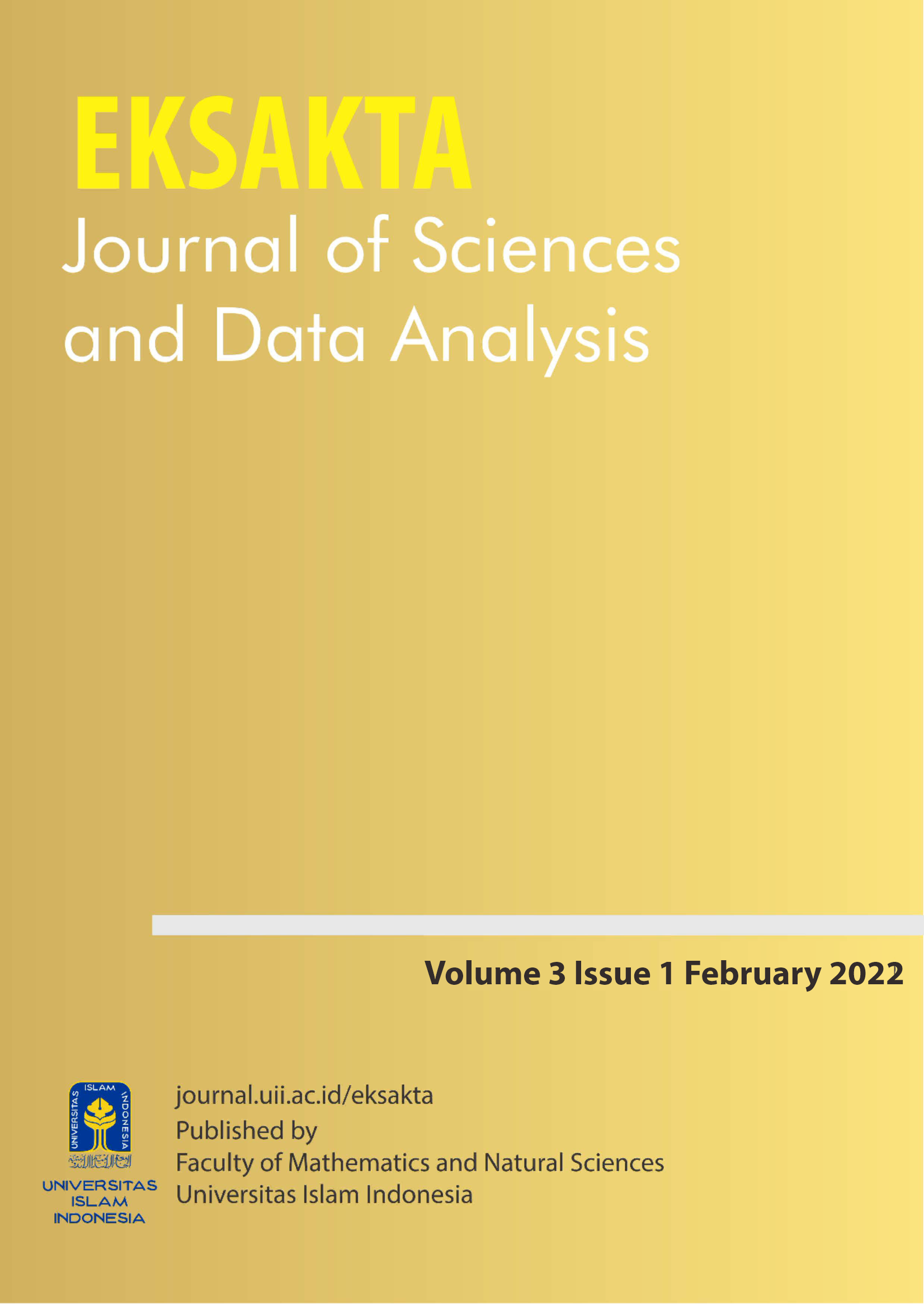Main Article Content
Abstract
Preparation of leaf mango (Mangefira Indica L)-based adsorbent and its evaluation to reduce methylene blue (MB) concentration have been conducted. Two materials: ads-pristine and ads-CTAB which are referred as native leaf mango adsorbent and CTAB modified leaf mango have been prepared in this study. Cetyltrimethylammonium bromide (CTAB) is cationic surfactant usually used to modify and increase the surface area of the adsorbent for a specific purpose. The materials obtained were characterized by the Fourier Transform Infra-Red (FTIR) and the Scanning Electron Microscope (SEM) with general result, there were detected functional groups indicated the active sites on the adsorbent such as -OH, C-O, C=C. Ads-CTAB was specifically characterized with appearing of C-H aliphatic as the tail of CTAB molecule. SEM images show that both materials have roughness surface and irregular cavities. Additional of CTAB on the surface led the more regularly surface. The optimum pH was in basic region (8), while the optimum adsorbent mass and MB concentration are not clearly found due to the chart still increasing. However, the highest qe was found by 0.01 g of ads-pristine and ads-CTAB with the value 967.25 and 950.75 mg g-1 respectively. As the further evaluation, with the 0.5 adsorbent mass it may be applicated on the MB concentration at around 4000 mg L-1. Kinetics model of this adsorption was followed pseudo second order reactions.
Keywords
Article Details
Authors who publish with this journal agree to the following terms:
- Authors retain copyright and grant the journal right of first publication with the work simultaneously licensed under a Creative Commons Attribution License that allows others to share the work with an acknowledgment of the work's authorship and initial publication in this journal.
- Authors are able to enter into separate, additional contractual arrangements for the non-exclusive distribution of the journal's published version of the work (e.g., post it to an institutional repository or publish it in a book), with an acknowledgment of its initial publication in this journal.
- Authors are permitted and encouraged to post their work online (e.g., in institutional repositories or on their website) prior to and during the submission process, as it can lead to productive exchanges, as well as earlier and greater citation of published work (See The Effect of Open Access).




